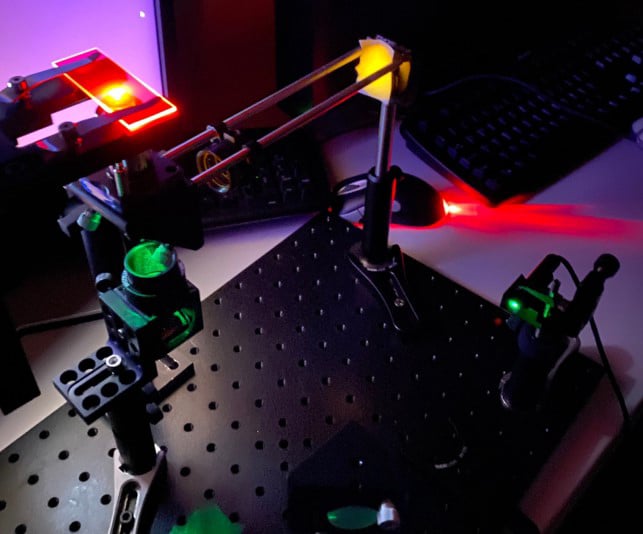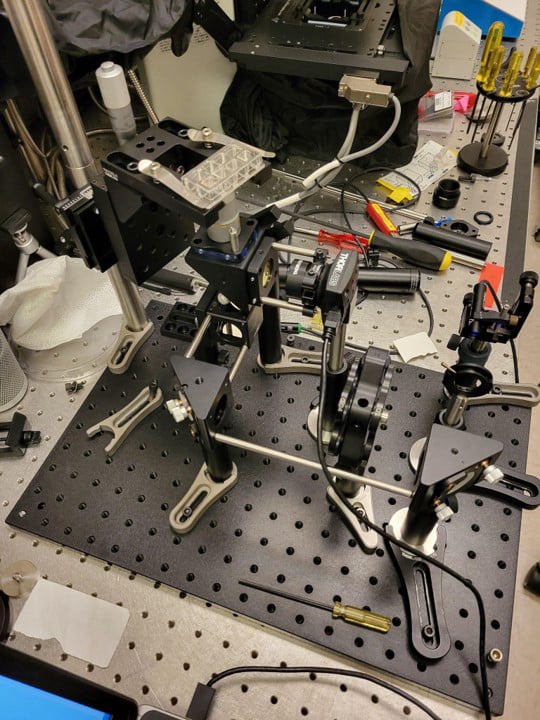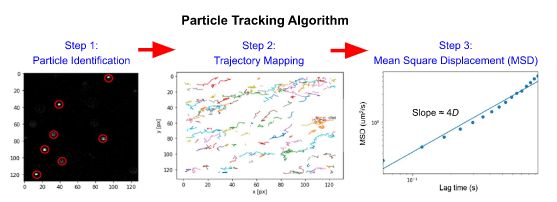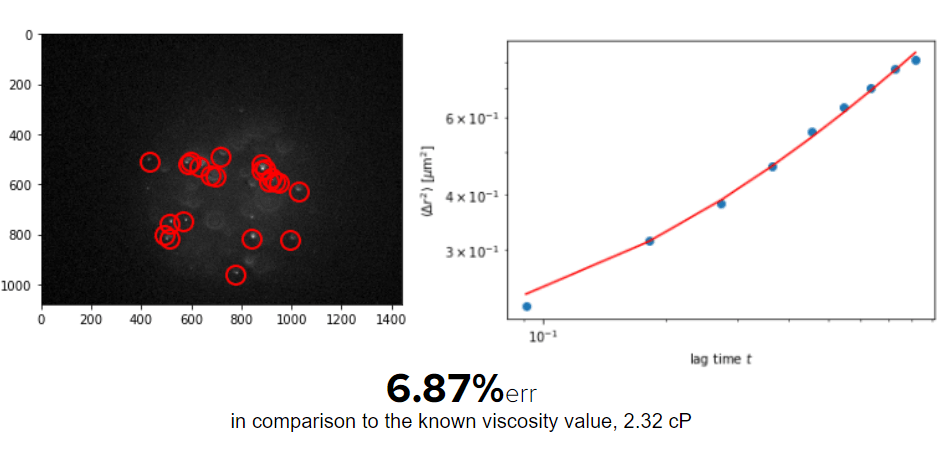
Our Product
A camera-based fluorescence microscope for the assessment of fluid deformation and flow characteristics

A camera-based fluorescence microscope for the assessment of fluid deformation and flow characteristics

The proposed fluorescence microscope design is shown here. The entire system will be relatively compact, composed of the following off-the-shelf components: a laser light source, alignment mirrors, and an objective to direct the light onto a sample. This is then collected by the objective and redirected into a collimating lens to focus the image onto a high resolution CMOS camera. The proposed design will enable a complete, low-cost, “plug and play” platform that can be used in a variety of locations, including university and pharmaceutical laboratories.
Our device aims to determine the viscosity of a substance through the utilization of particle tracking microrheology (PTM). This innovative technique involves the incorporation of fluorescently labeled nanoparticles within a sample, which are subsequently monitored and traced by a camera.
PTM requires a specific microscope design with the following features: (1) high particle contrast, such that the PTM algorithm can easily identify the position of each particle in each frame, achieved with fluorescence microscopy, and (2) high frame rate to sample the position of each particle with minimal discontinuities between frames, achieved with camera-based detection.


Our software works by identifying particles in each frame of the video captured by the microscope. These particles are then linked between successive frames so that we can watch how they move in the sample over the imaging period. After adjusting for drift, we can actually determine the average amount a particle will move over a given amount of time. Using that, we create our mean squared displacement vs time graph which we use to then determine the viscosity of the sample. As you can see in our results below, this software has been able to determine viscosity within the 5-10% margin of acceptable error.
Made with
Easy Website Builder